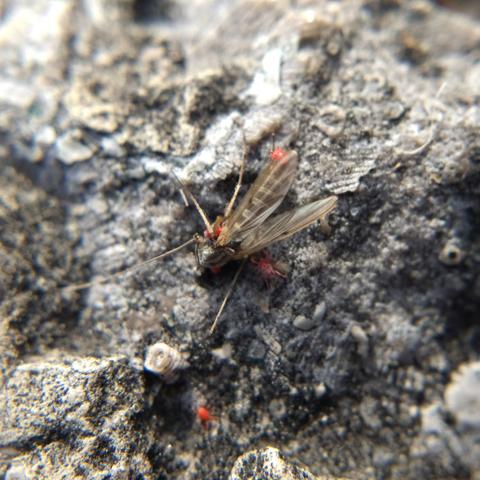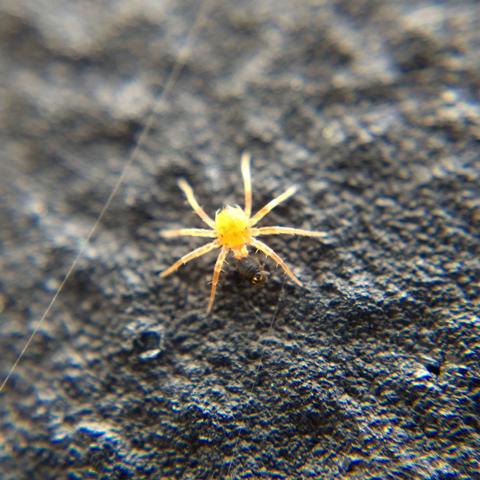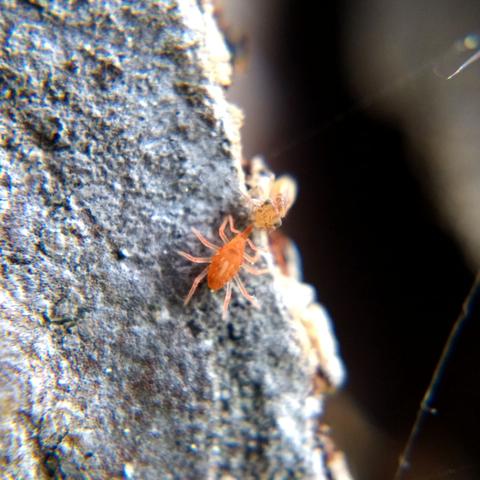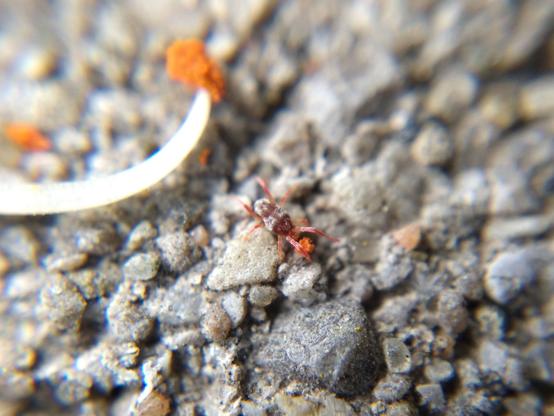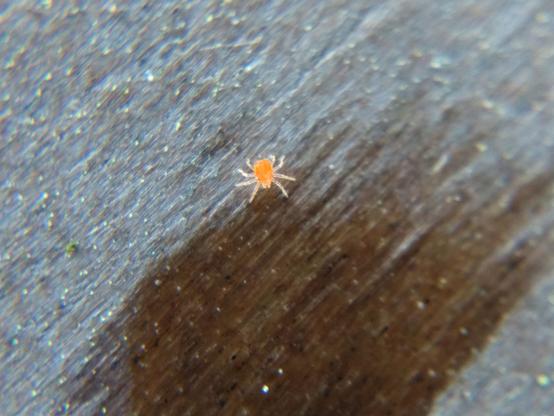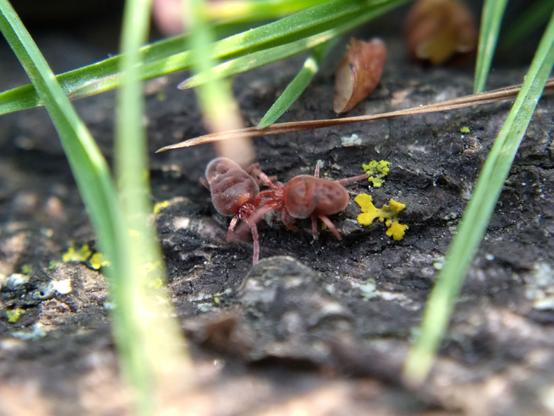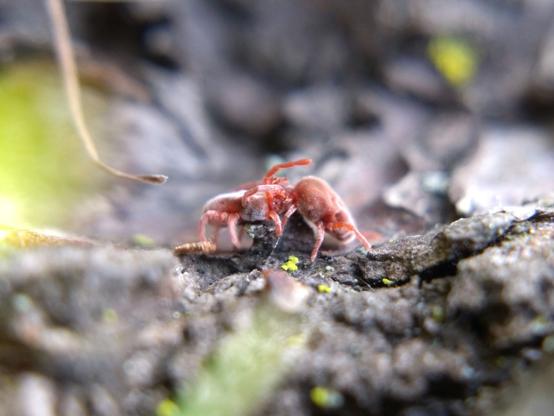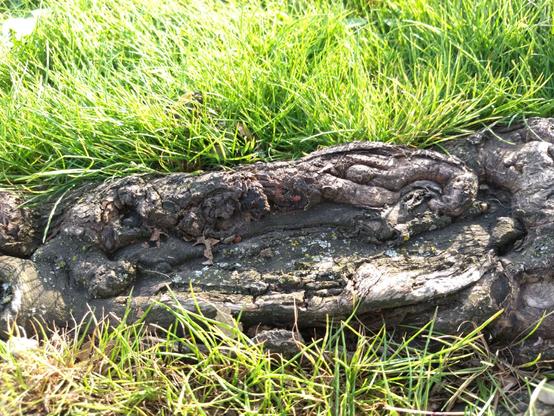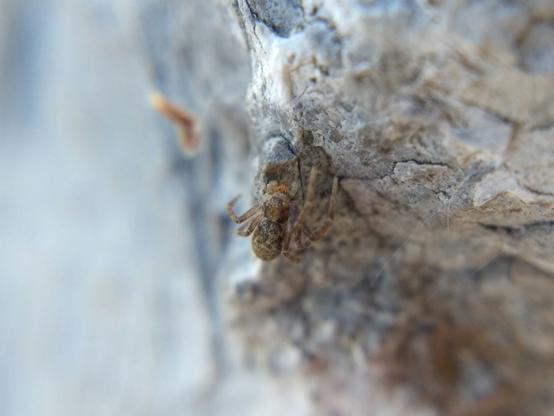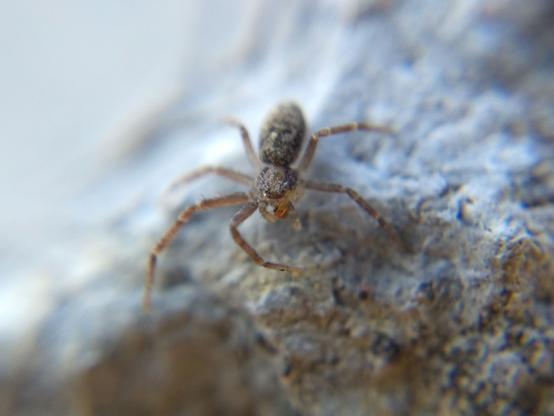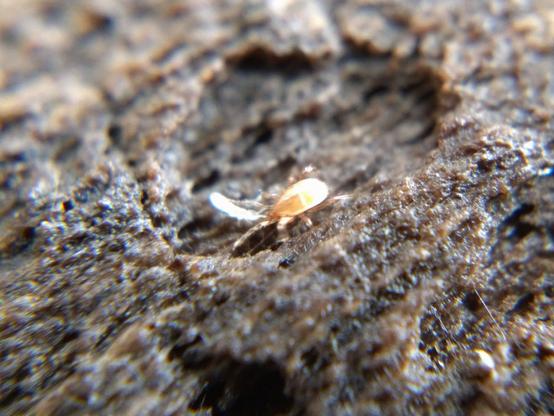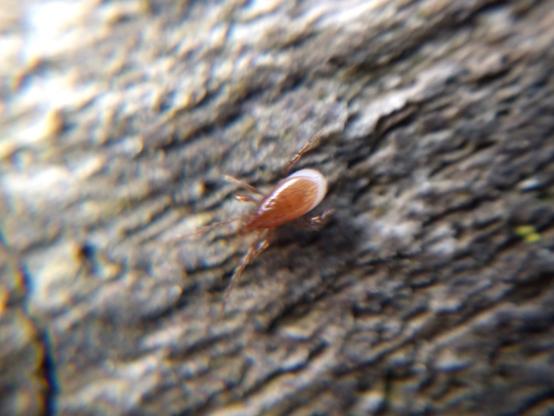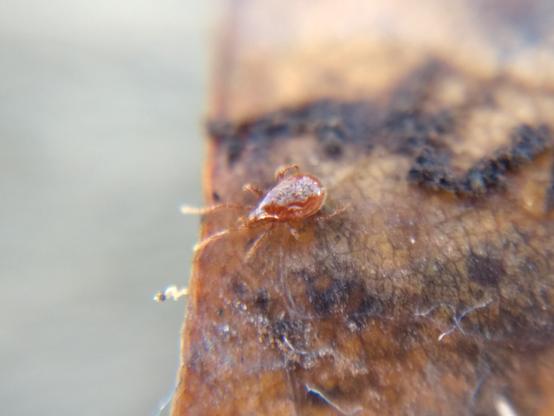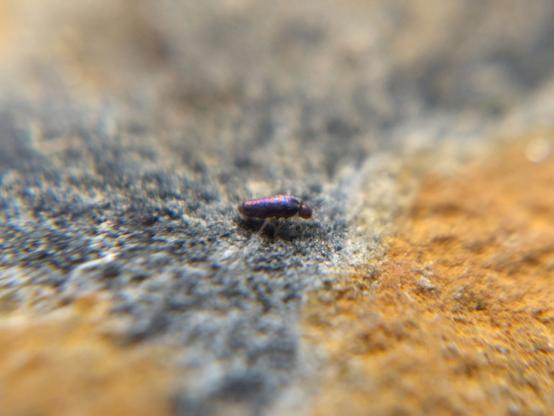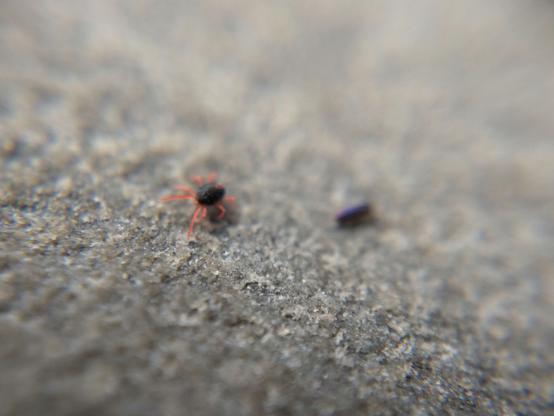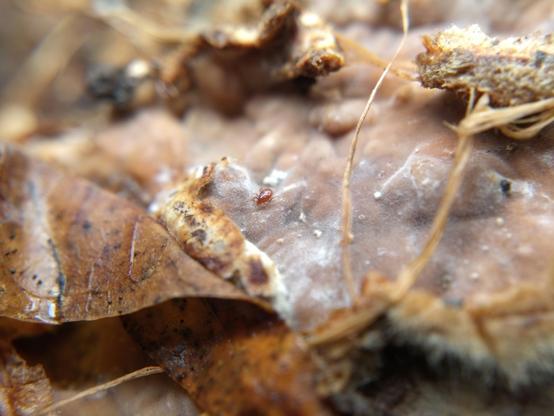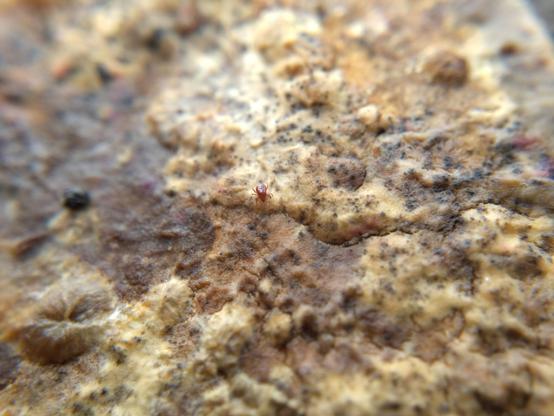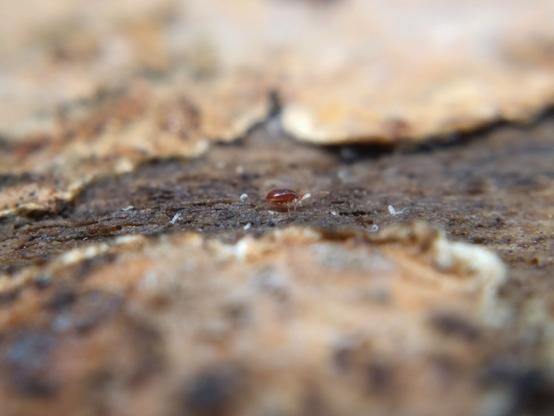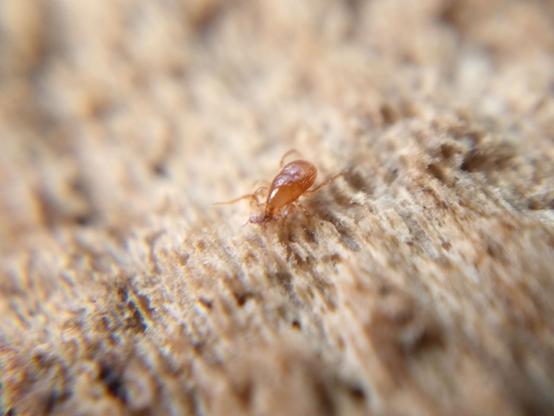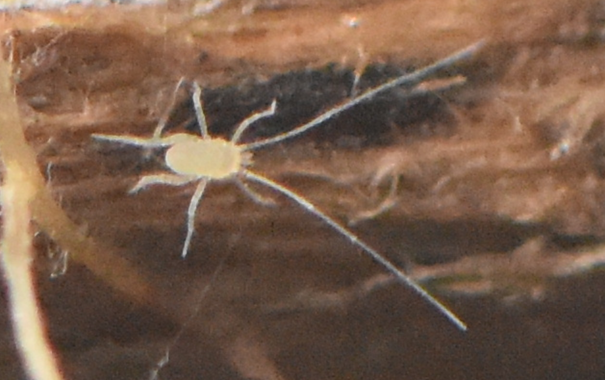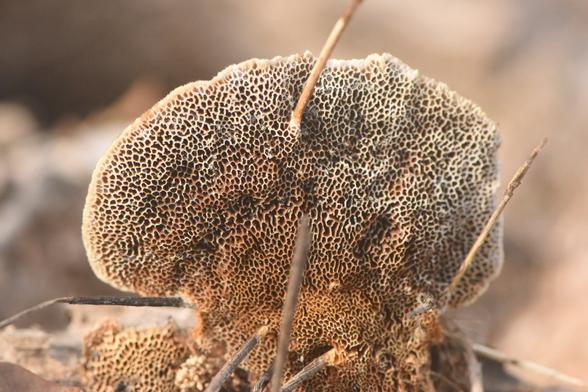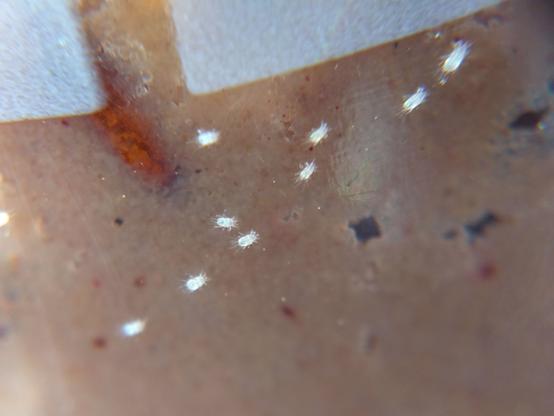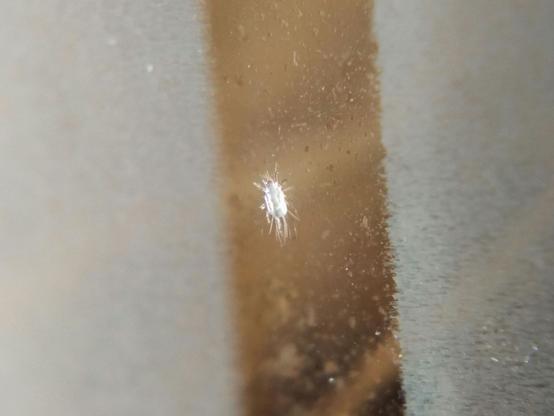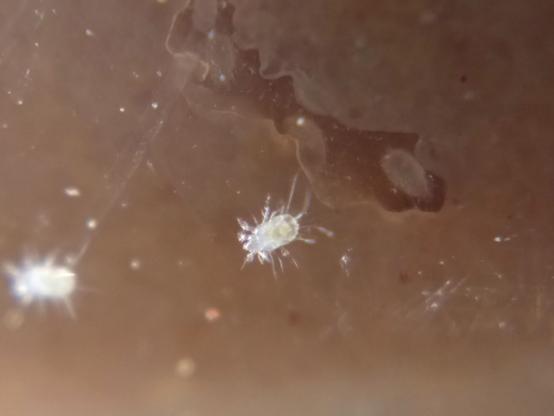#MiteMonday: Astig explosion!!!
I had been putting off making a new tub of fruit fly medium and excelsior for the flightless fruit flies, and discovered the other day that the current tub had quite the population of astigmatid mites, feeding off the same stuff and emerging in great numbers to swarm the outside of the tub during the warmest part of the day. I was actually pretty excited about this, as I hadn't personally seen an infestation of these since childhood, long before I started doing smartphone macrophotography (as a matter of fact, long before smartphones existed, but anyway…), and posts about them on bug ID forums are, for some reason, virtually always low-res shaky videos. So I actually had a chance to get up-close photos!
Astigs, which branched off from oribatids, are a large and diverse group. Some common species, largely in the family Acaridae (like _Acarus siro_ and _Tyrophagus putrescentiae_), are found around the world as pests of stored products. They may be called "grain mites", "mold mites", "flour mites", "cheese mites", etc. They are harmless, though in huge numbers (e.g. in a bakery, barn, or grain silo) they can spoil food.
I had just been using a pantyhose sock thing to cover the fruit fly tub, but I went out and got surgical masks so I can make something less porous. I'll also make a fresh batch of fruit fly medium and toss the old tub. That should help keep the mites at a more manageable level.
I can't ID these precisely—you really need an expert with a key and a microscope—but they're likely Acaridae of some kind.
#DailyMitePic #Mitestodon #arachnids #mites • #Acari #Acariformes #Acaridae
